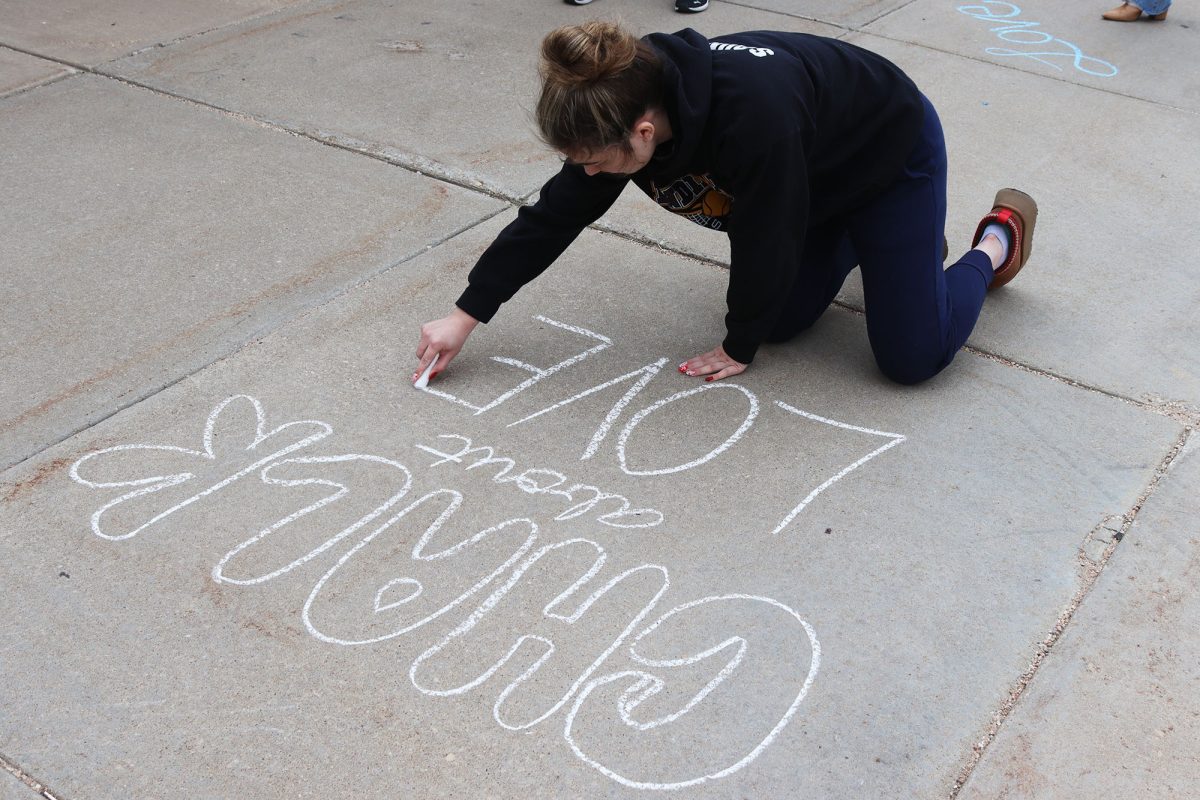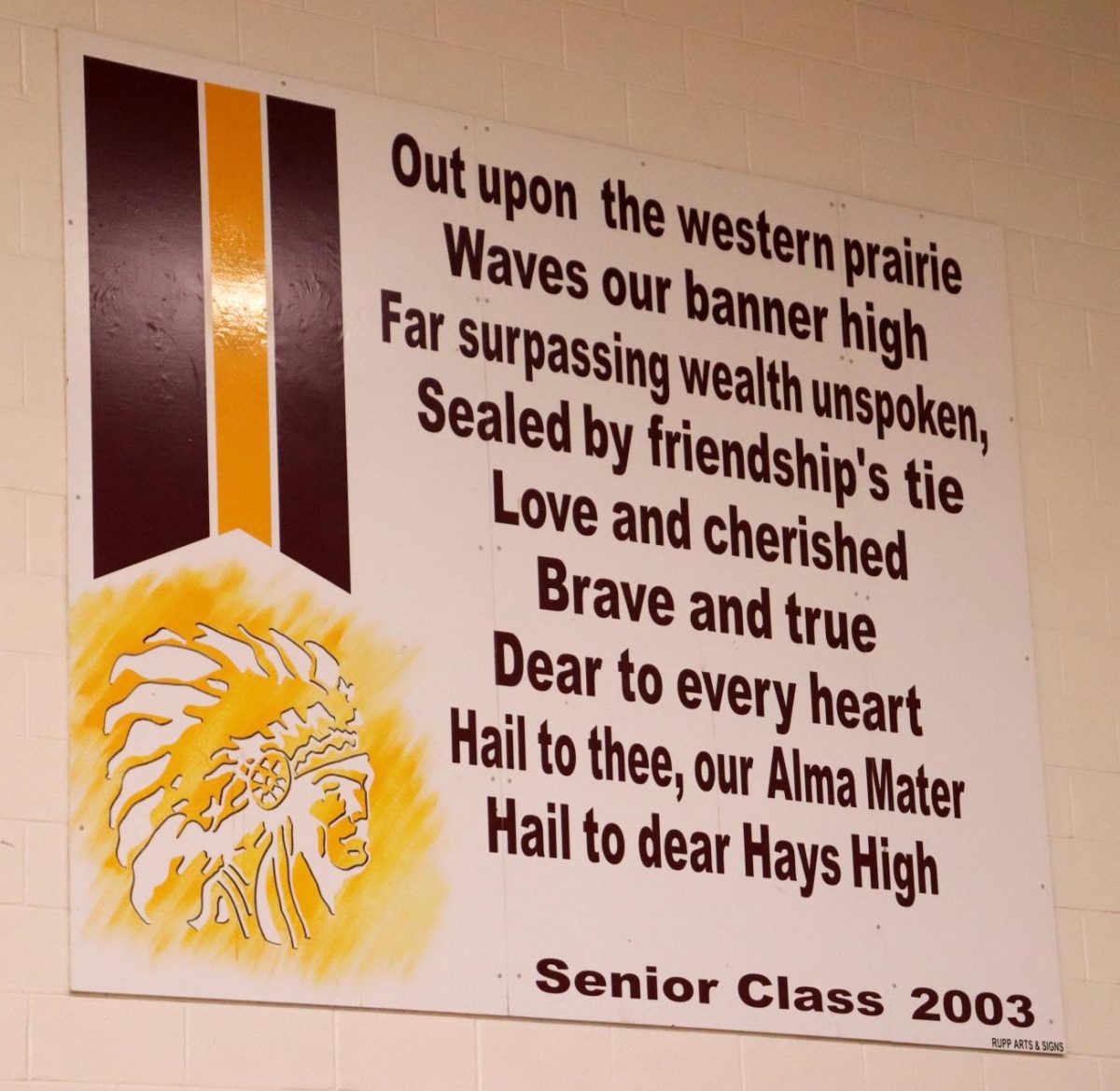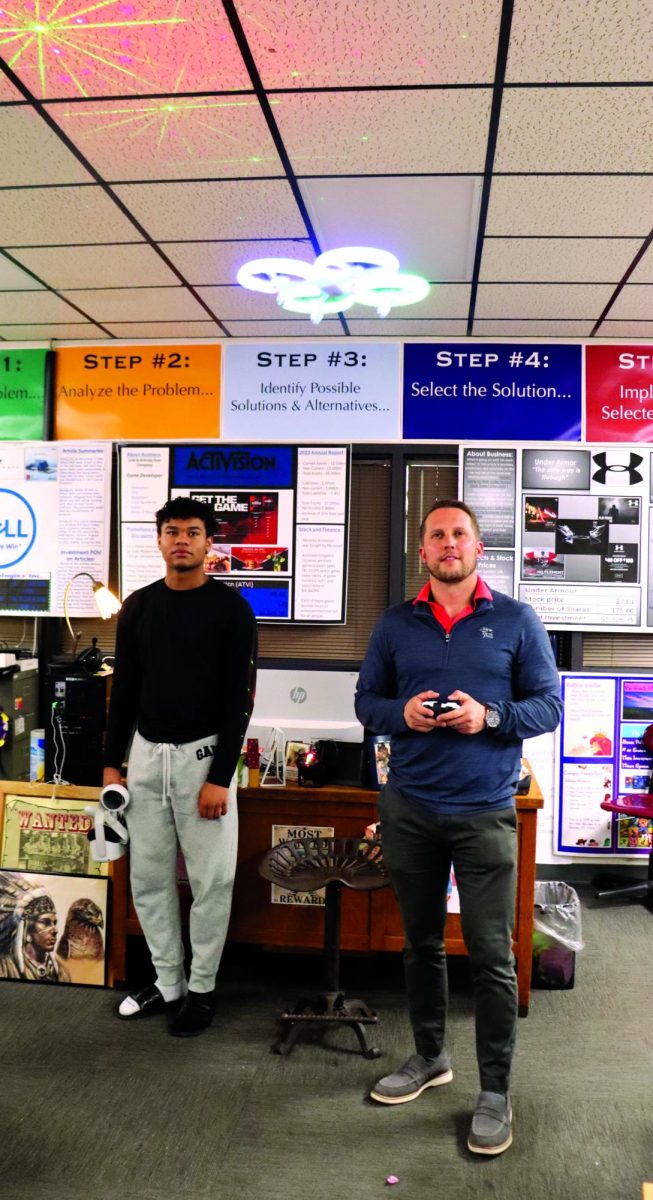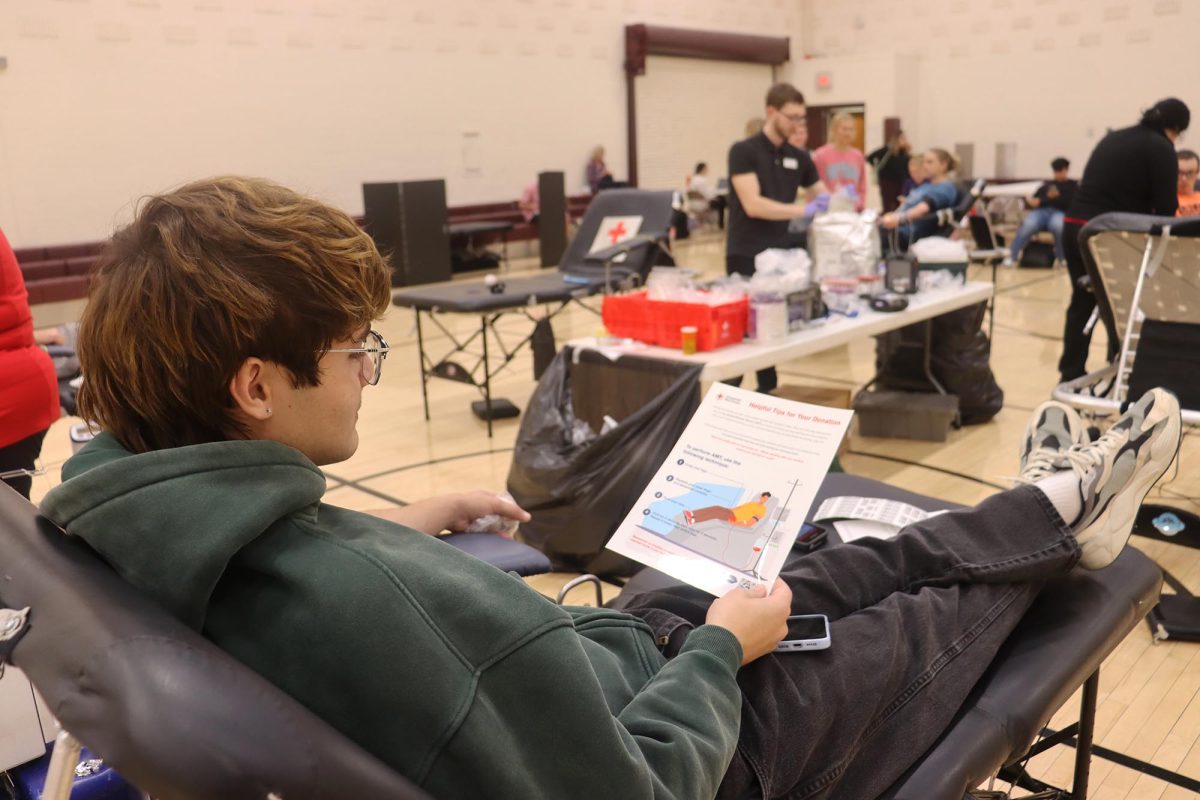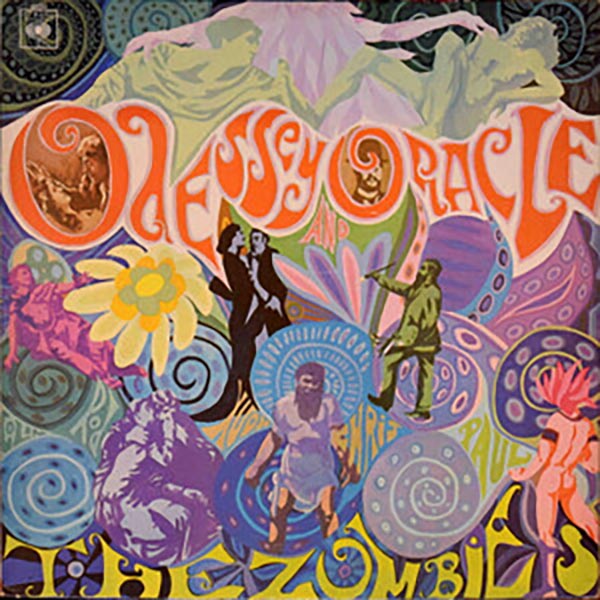This year, Hays High School put on a production of “Radium Girls” for the Fall Play on Nov. 14, 15 and 16 at the 12th Street Auditorium.
The play is based off the historical instances of the “Radium Girls,” who were women during the World War I era who painted clock dials with a glow-in-the-dark paint that contained radioactive material. The women who painted were told that the paint was harmless and were instructed to point the paint brush with their lips to make it precise.
The health conditions of the workers became known as early as 1917, but it took until 1920 for documents to be filed about radium poisoning. The workers’ symptoms had started with toothaches, leading dentists to pull out teeth and find a black pus. It turned out to be the bone of the jaw decomposing, and doctors now call it ‘Radium Jaw.’
In the play, the story follows the main character, Grace Fryer, played by senior Jordan Aschenbrenner, who worked at the U.S. Radium Corporation from 1917 to 1920. Her symptoms began in 1922 after she left the company to work at a bank for a better life with her fiancé Tom Kreider, played by junior Jesse Stabb.
It took her five years to file a lawsuit against the U.S. Radium Corporation with Katherine Schaub, played by senior Addy Brull, and Irene Rudoph, played by sophomore Alexis Ryan, who died before talking of a trial started.
Newspapers at this time were crucial for the case by making the public to have sympathy for the women and to give the U.S. Radium Corporation a bad reputation.
Senior Oscar Flores played Arthur Roeder, who was the owner of the U.S. Radium Corporation and went through court case with Vice President Charlotte Lee, played by senior Katelyn Willemsen. They tried to cover everything up for the good of the business by trying to offer private settlements to the affected women, prolonging the trials and pleading ignorance to the whole situation.
In the end, Fryer won, but lost her friend Katherine Schaub and her fiancé, who moved on while the trial was going on. The U.S. Radium Corporation settled for $10,000, an allowance of $600 a year for her life and all her medical bills paid. This trial helped the progression of labor safety standards and rights for workers.
“What I found most interesting about the play was that it was based off a true story, and we were playing the lives of real people with real struggles,” Aschenbrenner said.
26kfischer@usd489.com



